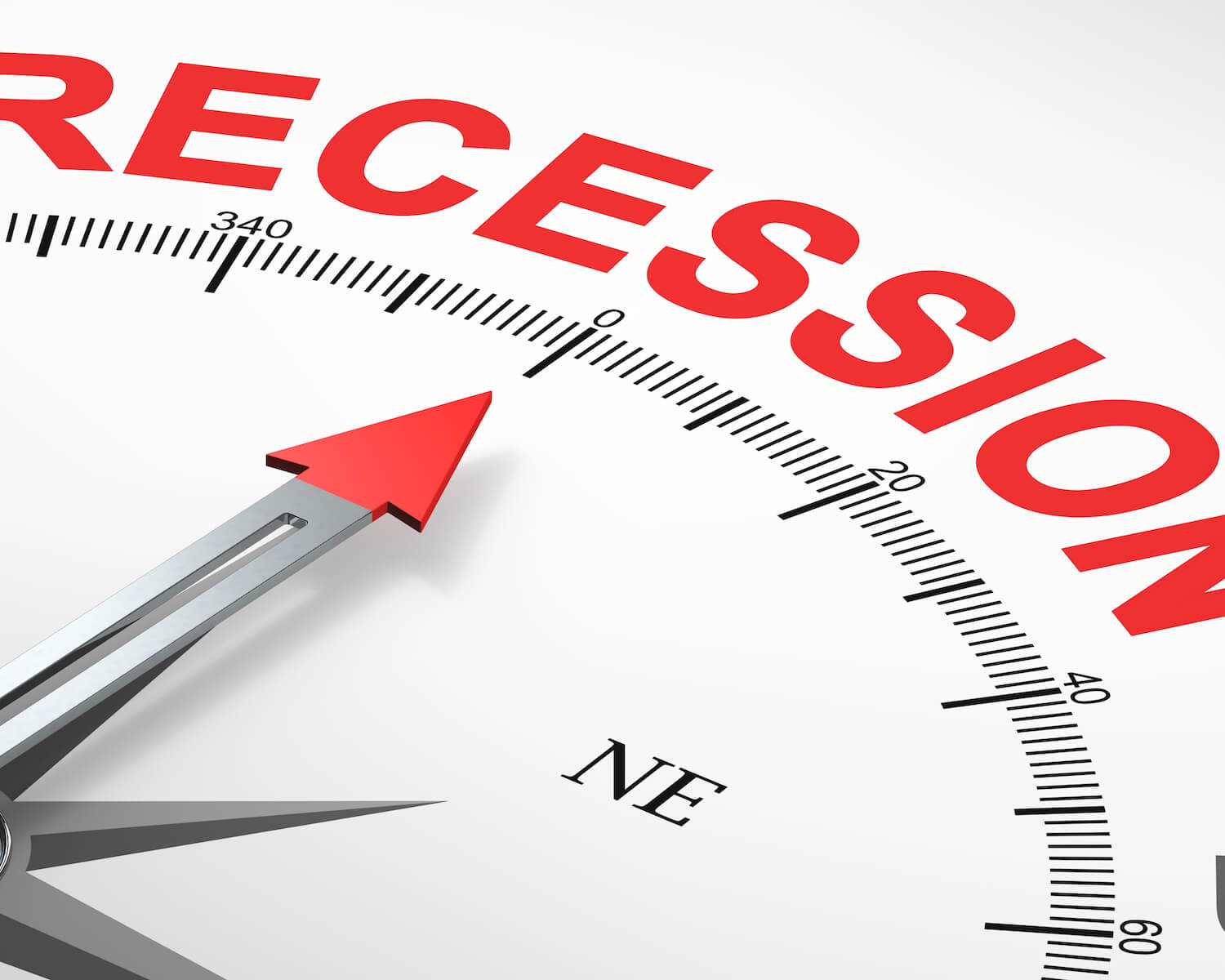
Posted November 29, 2023
By Jim Rickards
The Dreaded “R” Word: Bad Omens Everywhere
Is a recession already here? That’s not a rhetorical question.
It’s almost always the case that recessions begin before most everyday Americans, let alone analysts, are aware. Economists on Wall Street and at the Federal Reserve are usually the last to know.
There is no government agency that declares the beginning and end of recessions. That job, something like an umpire in baseball who calls balls and strikes, is left to a group called the National Bureau of Economic Research (NBER) based in Cambridge, Massachusetts.
They have a committee of about a dozen egghead economists who declare when recessions begin and end. They’re never in a hurry. They like to see a lot of data; not just the GDP numbers (which are only released quarterly with a one-month lag following the end of each calendar quarter).
They consider unemployment figures, industrial output, real incomes and other data. While numerous inputs are used, the rule of thumb is that two consecutive quarters of declining GDP are what make a recession.
The problem with that method is two quarters equals six months and there’s a one-month lag in reporting. So even in the best case, the recession would be seven months old before NBER would declare the beginning by looking back to the first day of the first quarter of decline.
The Vagueness of Recession
Even that rule is not hard and fast because the U.S. economy actually did have two consecutive quarters of declining GDP in Q1 and Q2 of 2022 and no recession was declared. Granted that decline was mild (-1.6% in Q1, and -0.6% in Q2) and unemployment did not go up, but it was still a recession using the rule of thumb. So let’s not rely on the NBER to let us know when recessions begin.
We’ll know before they do.
For the record, the average expansion since 1980 lasted 78 months, and the current expansion has lasted 38 months (ignoring Q1/Q2 2022) so we’re not exactly “due” for a recession. But 78 months is an average. Economies don’t operate on averages; that’s a statistical abstract.
Economies take their own course based on a large number of business cycle factors and exogenous shocks. From 1974–1982, the U.S. suffered through three recessions of which two (1974–1982) were the worst recessions since the Great Depression. That’s one recession every 32 months. So much for averages.
The recessions in the 1970s and early 1980s were driven by exogenous shocks. The 1974 recession came as the result of the Arab oil embargo in 1973, which itself was in response to the Yom Kippur War between Israel and a coalition of Syria, Iraq and Egypt.
Oil prices tripled from about $3.00 per barrel to $12.00 per barrel. This flowed through to the price of gas at the pump. The oil price shock was accompanied by supply shortages due to government regulation.
The combination sent the U.S. economy into a tailspin. The stock market fell 45% from January 1973 to December 1974. That percentage decline would translate into a 15,928 point drop in the Dow Jones Industrial Average index using today’s levels. That’s what a real oil shock and steep recession look like in stock market terms.
The 1980 recession was relatively mild and was over quickly. It was mostly due to regulatory blunders by Jimmy Carter and not to economic fundamentals. The 1981–1982 recession was another matter. It was driven by a second oil shock (after the 1979 Islamic revolution in Iran) and an extreme spike in interest rates to subdue inflation.
In 1981, interest rates hit 20% and inflation hit 15%. During that recession, the S&P 500 fell 28.4% peak to trough and the Nasdaq fell 31.6% peak to trough. That translates into a 1,289 point drop in the S&P 500 using today’s levels. Again, that’s what a real recession looks like.
The purpose of this recession history lesson is not just a walk down memory lane. It’s a warning to investors about how badly some recessions play out. We had fairly mild recessions in 1990 and 2001. The technical recession in 2007–2009 was as much a financial panic as a business cycle recession.
The recession in 2020 was extreme (GDP down 19.2% peak to trough) and lasted only two months but was caused by turning out the lights on the economy in a panic reaction to the pandemic. It was anomalous in that sense and not a good guide to where we are today.
The 1974 recession might be the best guide to today’s situation because it was triggered by a supply shock similar to the supply chain breakdown in 2021–2022.
The Signs Are Everywhere
If history is an uncertain guide, and the NBER is not a timely source, what’s the best way to understand where the economy is today in terms of recession risk?
I’ve been writing for almost a year about the signs of a coming recession. Most of these signs have been highly technical including inverted yield curves, negative swap spreads, a strong dollar and yields on short-term Treasury bills that are lower than those that can be attained with a phone call to the Fed under their RRP program.
These are all powerful and reliable signs, but they have long lead times, and they cannot pinpoint exactly when a recession will start. In short, they can tell us a recession is coming but are not especially useful on the precise timing.
Now we are seeing evidence of a recession through indicators that are concurrent with a recession. These signs are more obvious, less technical, and suggest that a recession may have already begun.
The first sign is that the stock market has been unable to regain the peaks reached in late 2021 and early 2022. The Dow Jones Industrial Average peaked at 36,800 on Jan. 4, 2022. Today it is around 35,400, down 1,400 points from the all-time high. The S&P 500 and Nasdaq Composite have taken similar paths.
These declines do not constitute a market crash and there has been ample volatility in the meantime. Still, the fact that all three major U.S. stock indexes are down over the past two years is indicative of a market that is running on fumes and preparing to correct sharply as the recession emerges.
The second sign of a recession is that interest rates are coming down. Interest rates are not a leading indicator. They are a lagging indicator. Rates actually go up at the start of a recession because businesses have weaker cash flow and turn to borrowing to maintain working capital.
Then the recession gets even worse, and banks turn off new lending because they are worried about credit losses. At that point, rates start to go down. But the decline in rates happens after the recession has already started.
Yes, rates are 4.33% now, but they peaked at 5.0% on Oct. 19, 2023. Since then, rates have dropped sharply. They were 4.93% on Oct. 31; 4.52% on Nov. 3; 4.49% on Nov. 8; and 4.33% as of today. That trend is not your friend. It suggests that rates are dropping sharply because the market believes a recession has already started or is coming soon.
Other recession signs include falling industrial production, rising initial claims for unemployment and a rising rate of continuing claims (which means employers are not hiring).
In short, we have moved from highly technical long-term recession indicators to more widely understood immediate recession indicators. The combination of the two should give investors pause.
And the memory of 30% to 45% stock market falls in 1974 should be enough to cause investors to lighten up equity exposure and move to cash, Treasury notes and gold to prepare for the worst.

How Others’ Incompetence Costs You Big-Time
Posted January 17, 2024
By Byron King

Turning Empty Cubicles Into Houses
Posted January 15, 2024
By Zach Scheidt

"Boring AI": Overlooked Opportunity From CES 2024
Posted January 12, 2024
By Zach Scheidt

5 Must-See Predictions
Posted January 10, 2024
By James Altucher

Welcome to Earth, the Mining Planet
Posted January 08, 2024
By Byron King
